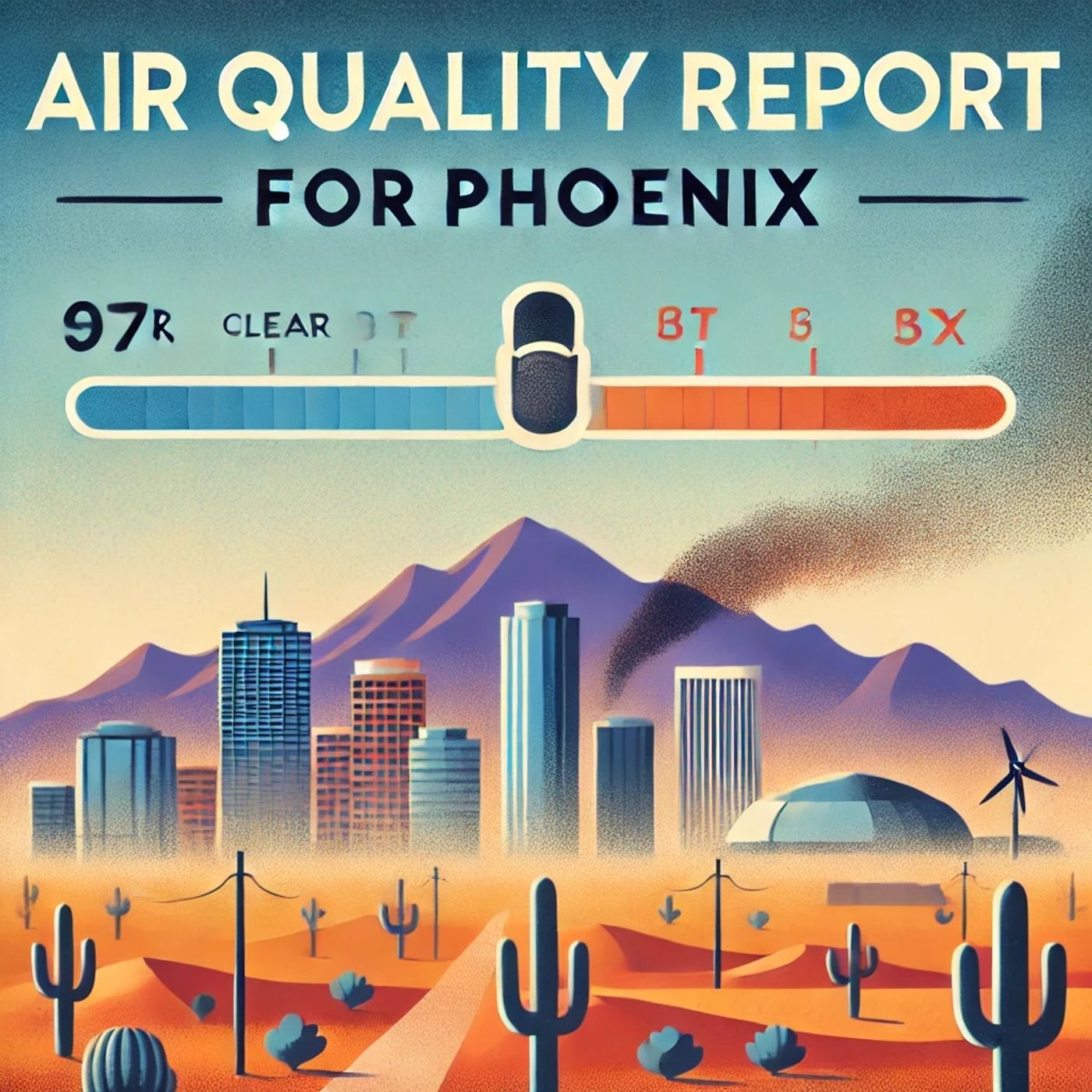Listen "Phoenix Air Quality Struggles Amidst Natural and Manmade Factors"
Episode Synopsis
I’m unable to browse the internet to access real-time data. However, I can provide information on general factors affecting air quality in Phoenix and common considerations for current conditions. Phoenix, Arizona, situated in the arid Sonoran Desert, presents a unique set of challenges and factors when it comes to air quality. Its air quality is influenced by both natural and anthropogenic factors. The region is prone to fluctuating air quality levels, which can be attributed to several primary factors.One of the key contributors to air quality concerns in Phoenix is the substantial vehicular traffic. As a sprawling metropolitan area, Phoenix witnesses high levels of emissions from cars and trucks, which release pollutants such as nitrogen oxides and volatile organic compounds. These emissions can react in the presence of sunlight to form ground-level ozone, a significant component of smog. Ozone levels tend to spike during the hot, sunny months, when the sun's rays are most intense.In addition to vehicular emissions, Phoenix also has industrial sources of pollution. Facilities such as power plants and manufacturing units can contribute to localized pollution events. The emissions from these sources can include particulate matter, sulfur dioxide, and other pollutants, which can adversely affect air quality.Dust is another significant factor in Phoenix’s air quality, often exacerbated by the city's dry and windy conditions. During periods of high winds, dust from the desert can be swept into the city, leading to increased concentrations of particulate matter. This is especially true during haboobs, intense dust storms that can occur during the monsoon season. Such events can significantly degrade air quality in a short period.The weather and geographical layout of Phoenix also play a crucial role in the city’s air quality. The city is surrounded by mountains on three sides, creating a basin effect. During temperature inversions, typically occurring on cooler nights, warm air traps cooler air and pollutants close to the ground, leading to concentrated levels of air pollution. Seasonal changes also affect air quality, with the winter months likely to see elevated levels of particulates due to the use of wood-burning fireplaces and local weather conditions that trap pollutants near the ground. Meanwhile, the summer months pose challenges related to ozone formation. Residents concerned about air quality conditions in Phoenix are encouraged to stay informed through local news reports and resources like the Arizona Department of Environmental Quality (ADEQ). These organizations provide valuable updates and forecast information about air quality, allowing residents to take necessary precautions, particularly those in sensitive groups such as children, the elderly, and individuals with respiratory conditions.Efforts to improve air quality in Phoenix continue, with regulatory policies focused on reducing emissions from vehicles and industrial sources, and initiatives encouraging public transit and alternative transportation methods. Despite the challenges, ongoing attention and proactive measures are key to enhancing and maintaining healthier air quality for Phoenix and its inhabitants.This content was created in partnership and with the help of Artificial Intelligence AI
More episodes of the podcast Phoenix Air Quality Report - Daily
Phoenix Enjoys Excellent Air Quality Today
23/08/2025
 ZARZA We are Zarza, the prestigious firm behind major projects in information technology.
ZARZA We are Zarza, the prestigious firm behind major projects in information technology.
